Tony Dowe: feats of endurance
Behind-the-scenes maverick Tony Dowe tells Mike Doodson about TWR’s intra-team tussle at Le Mans 1990, F1 rule-bending and his driver favourites

Getty Images
In a career that goes back to his own teenage fumblings as a kart racer, Tony Dowe has been linked as an engineer or manager with a couple of dozen of our sport’s leading teams, several of them more than once. He has been the trusted employee of leading entrants including Bernie Ecclestone, Carl Haas, Jim Hall and Guy Ligier. His longest-standing association was with the late Tom Walkinshaw, notably during the period 30 years ago when the TWR Jaguars dominated at Le Mans and elsewhere. This is a man whose memory is packed with countless inside stories. At last, they can be told. Well, at least some of them…
Dowe spent his youth in the Wiltshire town of Melksham, and his voice still carries the West Country burr. From his schooldays, his devotion to motorised sport had him pedalling his bike to distant race venues like Castle Combe and beyond. In his teens he got as far as building and racing his own kart, only to find himself spinning off at the last corner on the last lap of a race that he had been leading at Oulton Park. His conclusion: he was better at preparing them than driving them.
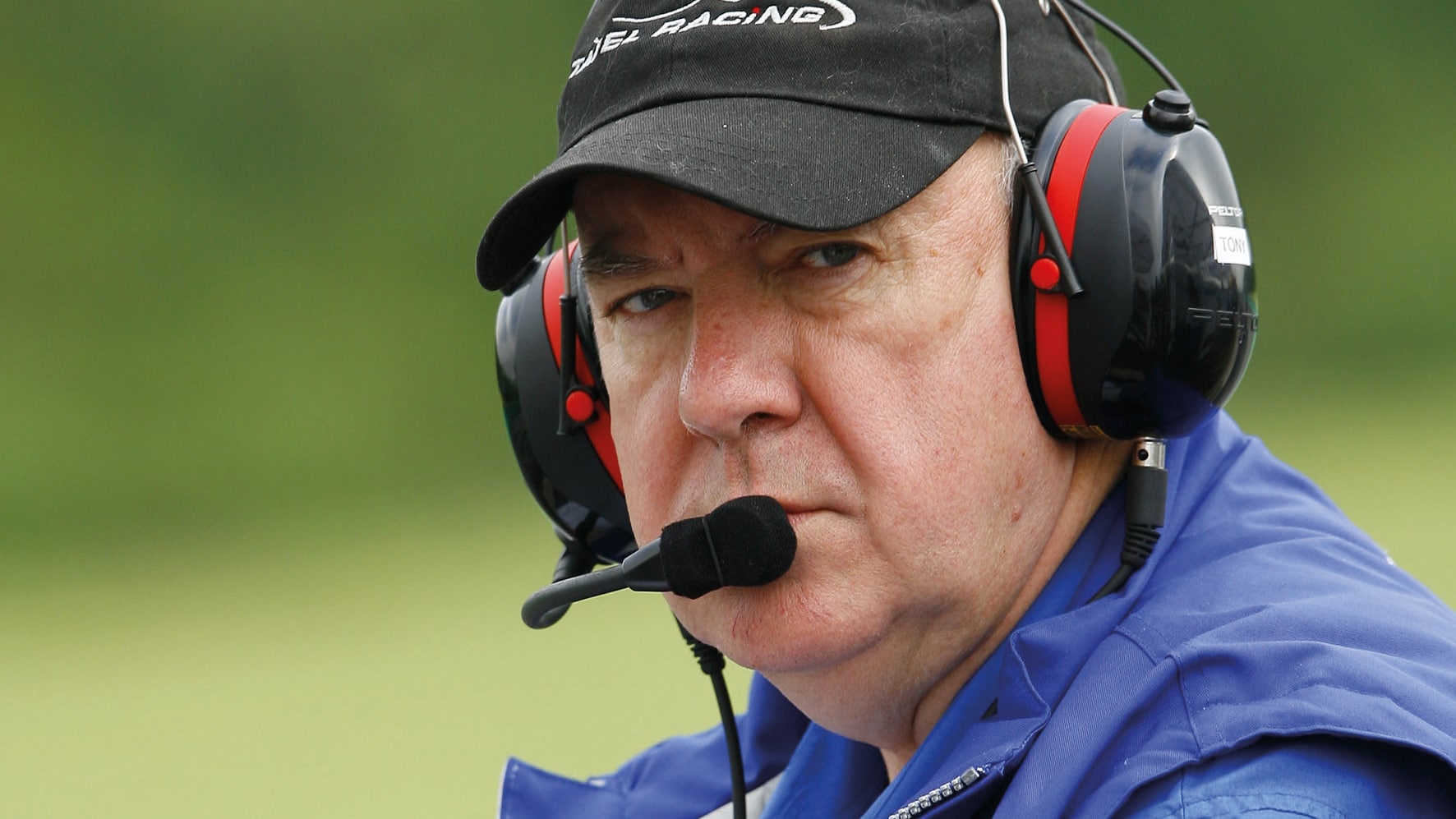
A close childhood friend and neighbour was fellow kart racer Chris Lambert, who in 1968 was showing promise in international Formula 2 events in a private team set up by his wealthy team-mate, a trainee barrister named Max Mosley. At Zandvoort in 1968, where Dowe was working on his Brabham, Lambert had a tangle with the Swiss roughneck Clay Regazzoni, and was killed. It may sound callous now, but Dowe’s own short career behind the wheel had inured him to fatalities. Some years later, with the Ensign F1 team, he found himself toiling as a mechanic for the hard man from Ticino (“Quick and experienced: he was very good to work with”).
The Ensign period was followed by a year, 1977, at Bernie Ecclestone’s Brabham, where he was able to appreciate the genius of Niki Lauda (“Fantastic brain, knew how to get 100% from [designer] Gordon Murray. Even better, he knew how to get what the team needed from Bernie. And so quick…”).
A move to Walter Wolf’s short-lived F1 team in 1978 brought Dowe into contact with James Hunt, whose departure from McLaren two years after his glorious 1976 title had been clouded by rumblings that his colourful private life was damaging his driving and commitment. Hunt’s last grand prix was at Monaco in 1979, after which his contract would entitle him to claim half of his retainer. He qualified 10th, then pulled out of the race after four laps with a broken driveshaft. Years later, team manager Peter Warr told this writer that the part broke because Hunt had deliberately squeezed a rear wheel against a barrier.
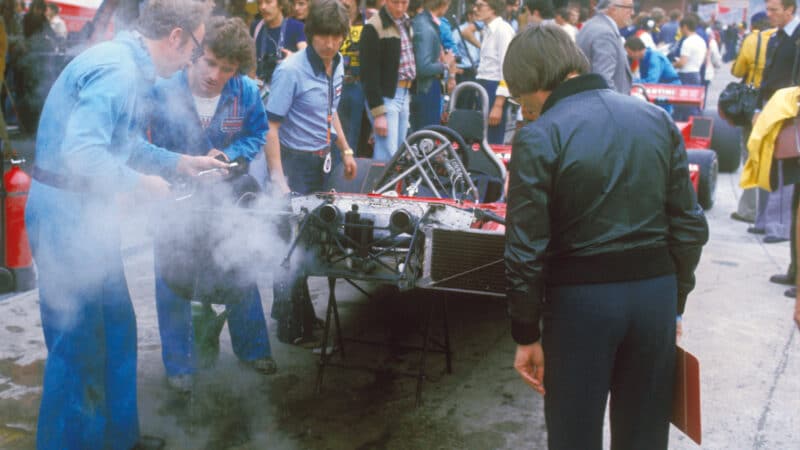
Tony Dowe worked with Bernie Ecclestone in ’77
LAT Images
Dowe looks dubious about this. The record shows that the fragile Wolf WR7 had already DNF’d in six of its first seven GP outings, once with a broken driveshaft. Nevertheless, it was clear that Hunt’s heart was no longer in racing, as Dowe confirms: “He had been good enough to tell me he was going to leave the team after Monaco and suggested I find another job.”
So was that final DNF at Monaco a genuine car failure or a defeatist ruse? Dowe, no admirer of Warr, suspects that his old boss may well have been attempting to flatter your correspondent with a sensational late scoop. For the remainder of 1979, Dowe was getting along well with Hunt’s replacement, Keke Rosberg, who was also competing in occasional Can-Am events for Newman-Freeman Racing, a team which Dowe would briefly join. The verdict on Rosberg: “He never found a limit. His limit was way beyond lesser drivers. So quick and a great motivator.”
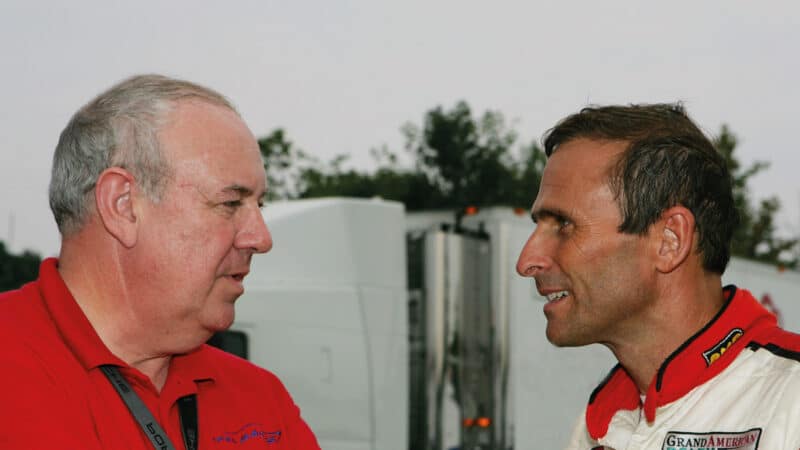
2005, on IMSA duties, left, in discussion with driver David Murry
With Newman-Freeman disbanding, Dowe’s next employer would be Carl Haas, the Chicago businessman who had been the US importer of British-built Lola racing cars since 1967. Haas also had his own racing team, which in 1980 was focused on the revived North American Can-Am championship, using good ol’ earth-shaking V8 engines.
“That championship with Haas was the best I can remember”
Haas’s choice of driver was the Frenchman Patrick Tambay, a temporary exile from F1 after McLaren’s nightmare 1979 season. “That championship with Tambay and Haas was the best I can remember,” Dowe enthuses: “We won seven out of the nine championship races. Very unfairly, Patrick was always underrated by other drivers. He was far more ruthless than he appeared to be, and when you showed him commitment, he returned it in spades.”
In 1983, after he had finished with F1, Mario Andretti joined Newman/Haas Racing, set up by Haas and actor Paul Newman to go IndyCar racing, which was an instant success.
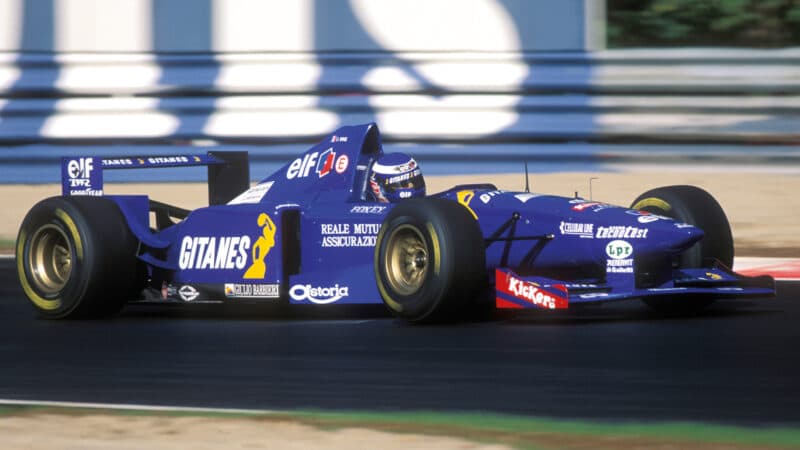
Benetton-esque Ligier
The parting with Haas was unexpectedly sudden. “In September 1987 I had flown to England with Carl Haas, to go and see Eric Broadley. We were expecting it to be a nice meeting. But no sooner had we walked in than Eric faced up to Carl – who had probably sold eight out of 10 of all the Lolas ever built – and told him it was all over between them. ‘You’ve done me for the past 20 years and you’re the one who’s made good out of it, while I am penniless. I don’t want to deal with you any more. Just go away.’
“So we left. Before flying back to Valparaiso [Indiana] I met with Roger Silman, one of Tom Walkinshaw’s managers at Kidlington, to talk about some role in the TWR America deal. Tom was there and an offer was made, which I accepted. With only 16 weeks to go before the first race, I dashed back to Indiana to give Haas my notice and pack up.”
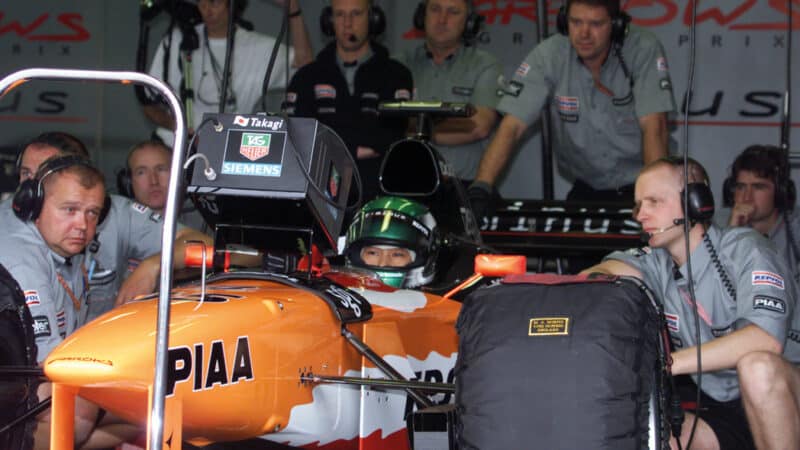
Late ’90s with Arrows
Getty Images
During this period TWR was running its V12-engined XJR sports cars both in Europe and America. “In the first race that we did together, at Daytona in ’88, we finished first and third, which, apart from Spa in 1984 [TWR’s XJS], was the first 24-hour race that Jaguar had won since the ’50s,” Dowe recalls. “At Le Mans we were running two of the five TWR Jaguars and one of them finished fourth. It was awful.” For Dowe, perhaps so. In fact, a Walkinshaw XJR won the race, but it was one of the ‘English’ entries. Being beaten, even by someone on your own side, does not go down at all well with Dowe.
Next on the Dowe CV would be as team manager of the F1 Ligier team, based in the village of Magny-Cours in deepest rural France. The team had fallen into Walkinshaw’s hands as a consequence of his involvement with, and part-ownership of, the Benetton F1 team. Enter Benetton wrangler-in-chief Flavio Briatore, with Bernie Ecclestone in the wings.
“Tom had a contract with Benetton that if they won the WC with Michael Schumacher, which they did in 1994 and 1995, he could buy a majority shareholding in the team. But when Flav and Bernie realised what the value of Michael Schumacher in a Benetton was, all that fell by the wayside. Bernie talked Tom into accepting Ligier instead, which he could then move to England.
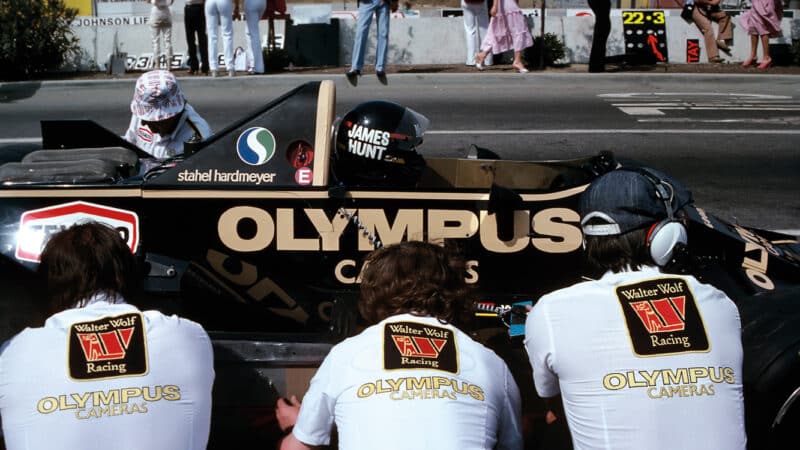
James Hunt’s season with Walter Wolf was clouded with controversy.
Getty Images
Dowe packed his bags for France. “It was two spells. I got on well with the French. We went from seventh in the ’92 constructors’ with six points to fifth in ’93 with 23 points.”
This is no place to examine the complexities of the Ligier team, which are tied in with French politics through François Mitterrand, president from 1981 to 1995, who had powerful connections in the Nièvre region around Magny-Cours. This helps to explain how for 1992 the state-owned Renault company was persuaded to supply engines to the second-league team founded by Guy Ligier, a long-time associate of M le Président.
When Dowe arrived in Magny-Cours, “the first thing Tom wanted me to do was to find out what the team’s income was and how much we were spending on going motor racing”, he recalls. “I learned that we were paying Renault $11m a year for the use of the engine and with the balance of our own expenses, including the wind tunnel, we were spending a total of $23m on going motor racing. The income was $64m… and every month envelopes were being sent out from Ligier to people who had helped Mitterrand to become president.”
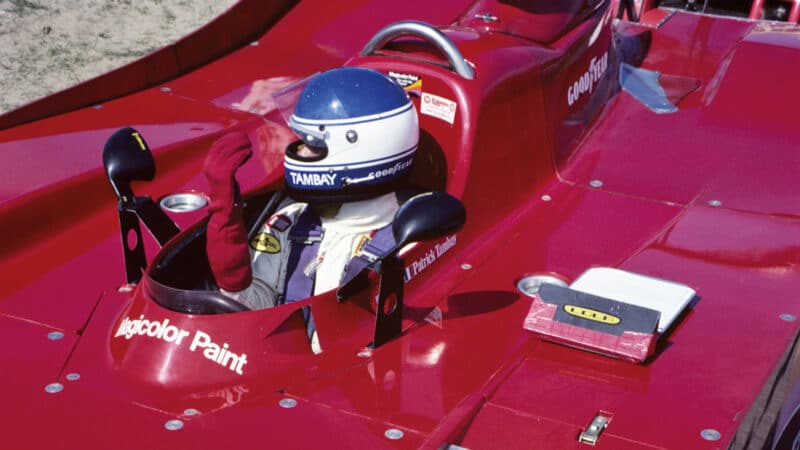
Patrick Tambay won six of 10 rounds in 1980’s Can-Am
There was an awkward moment in 1995 when a close visual similarity was glaringly apparent between Benetton’s new B195, now with Renault V10 power, and Ligier’s JS41 (with Mugen-Honda V10). The F1 rules did not allow teams to share chassis designs. So, attempting to shake off the obvious links implicit in Briatore’s part-ownership of both teams, a grumpy Walkinshaw was wheeled out to deny it all. He claimed that structurally the cars were “quite different” and somewhat obscurely insisted that the crash-test process revealed “a totally different signature”.
“The car we had was a Benetton copy. This wasn’t strictly allowed”
Although few were convinced, the FIA reluctantly accepted the explanation. Only now does the normally loyal Dowe confess the truth. “The car we had was a Benetton copy. Although this wasn’t strictly allowed by the rules. At Ligier we had copies of all the Benetton drawings.”
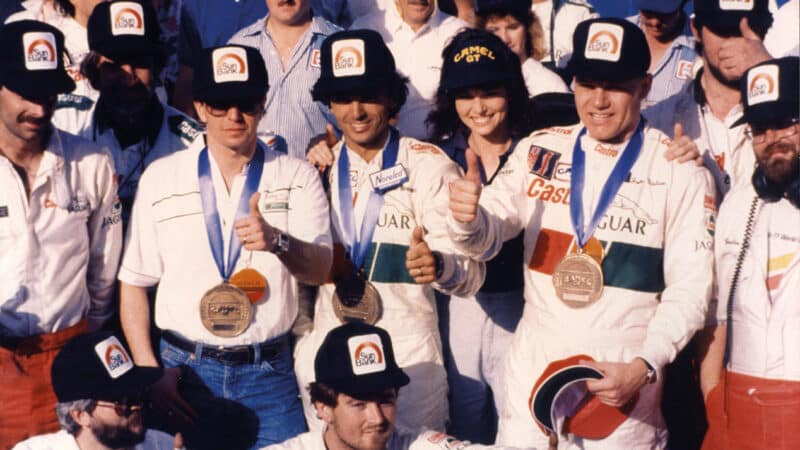
Thumbs up for Jaguar’s success at the 1988 Daytona 24 Hours
Having run the French outfit for a couple of years, Walkinshaw discovered, rather late, that his ambition to buy the team was blocked by the revelation that Guy Ligier had retained a 10% shareholding and wasn’t about to give it up. Unable to complete the deal in the spring of 1996, Walkinshaw quit the team, parted company with Briatore and acquired the Arrows team in order to pursue his F1 interests.
Dowe’s position at Arrows as director of racing was to be no more following the collapse both of the racing team and of the TWR empire in 1999. Although he returned for 10 years to the US, where he occupied administrative positions with various racing outfits – including the International Motor Sports Association – he would not be directly involved again in international racing.
In 2011, he was offered a position in Australia with the V8 Supercars team owned by the Kelly brothers. More recently he was employed by Tom Walkinshaw’s son Ryan in another Supercars operation, and has since moved to Charlie Schwerkolt’s Team 18. He is involved in car builds, but has no interest in race operations. Now in his eighth decade, he is happy to be back where he started, with the spanners.